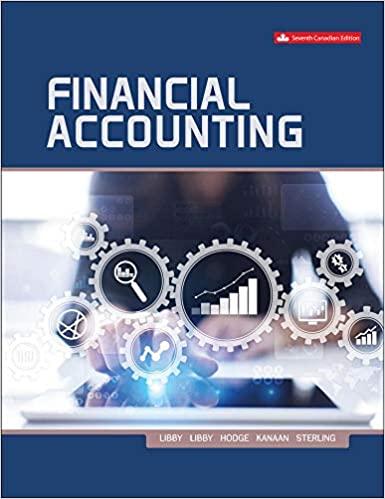Answered step by step
Verified Expert Solution
Question
1 Approved Answer
1. Compute cost of goods available for sale and the number of units available for sale. 2. Compute the number of units in ending inventory.
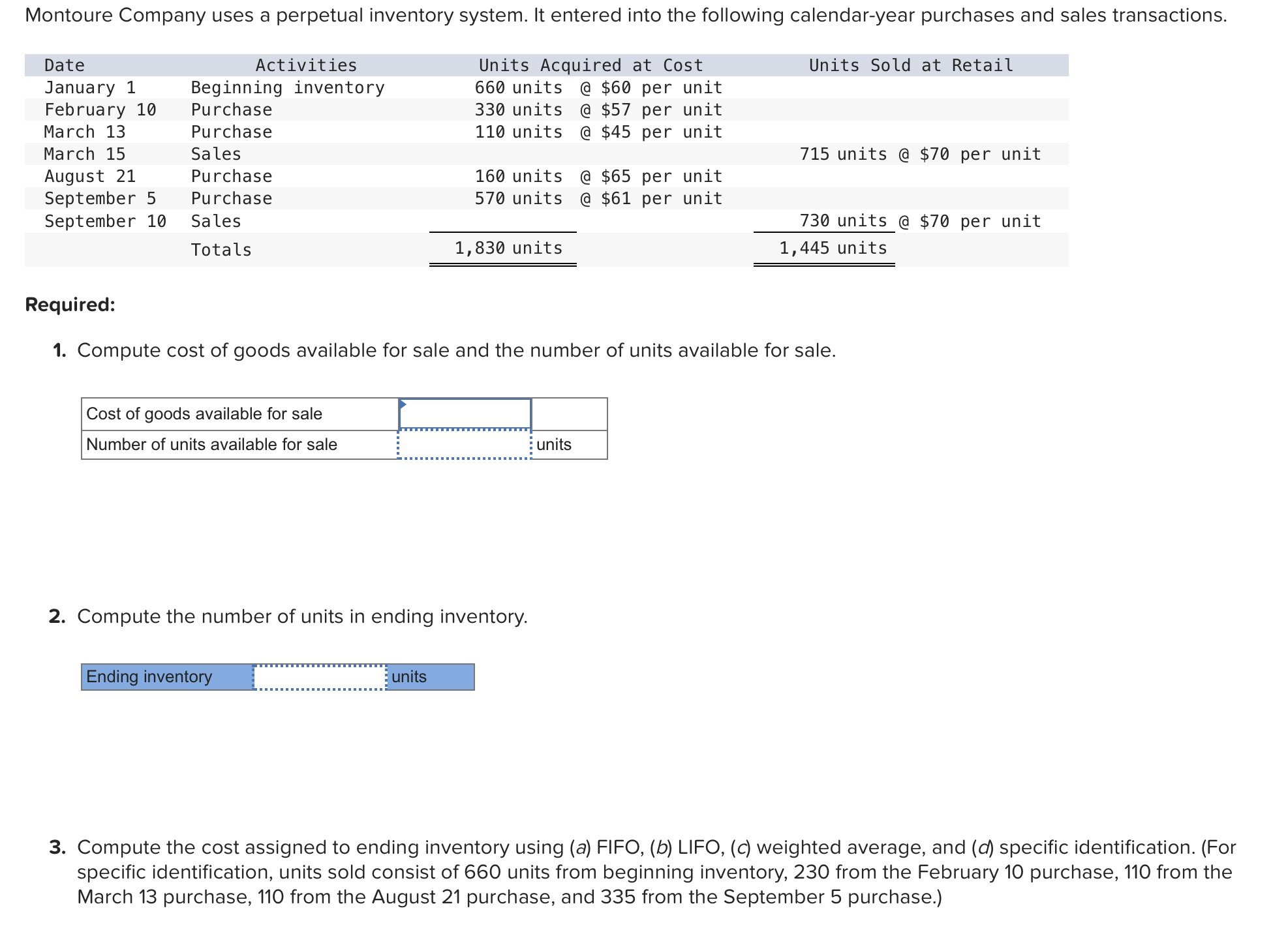
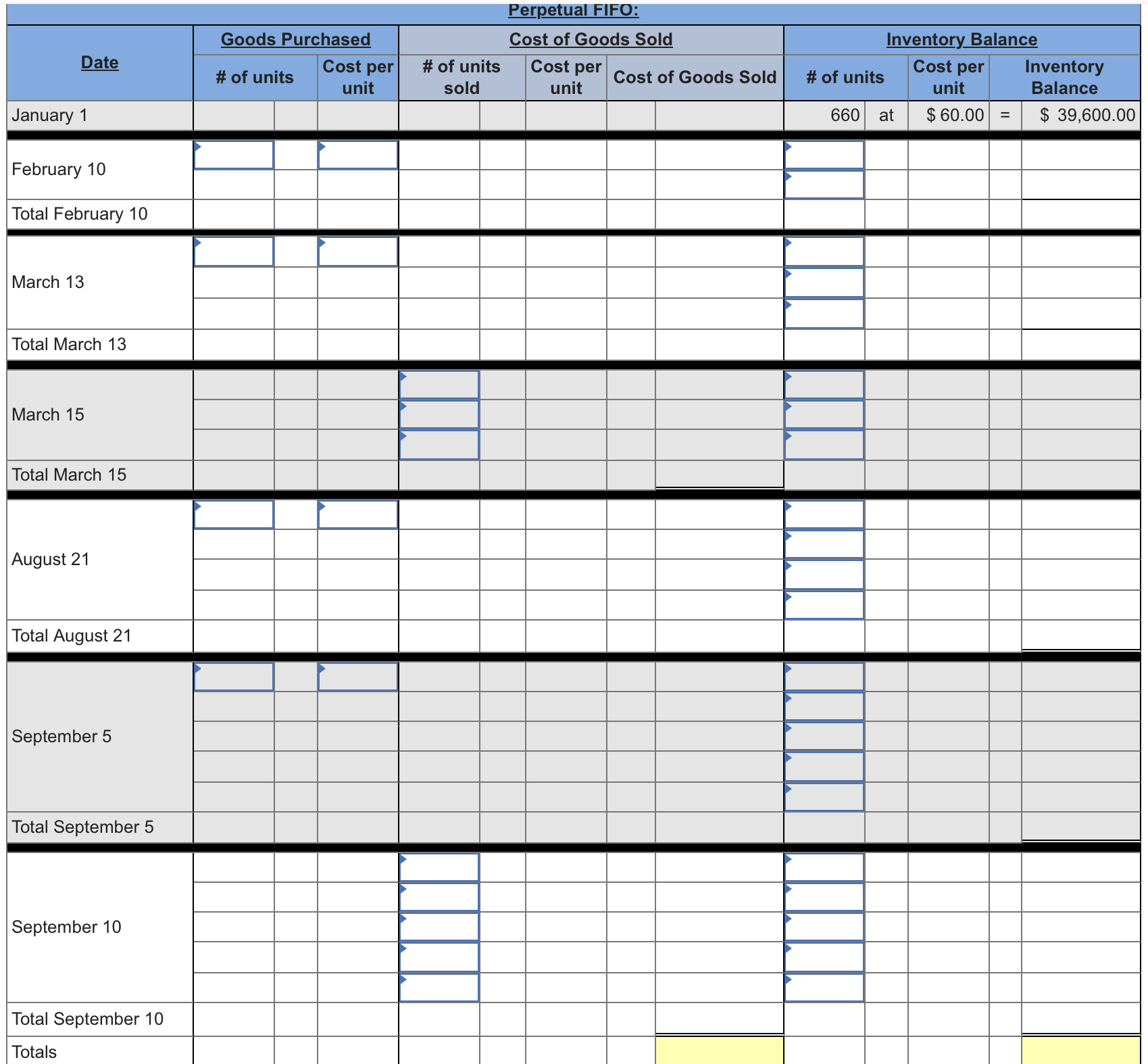

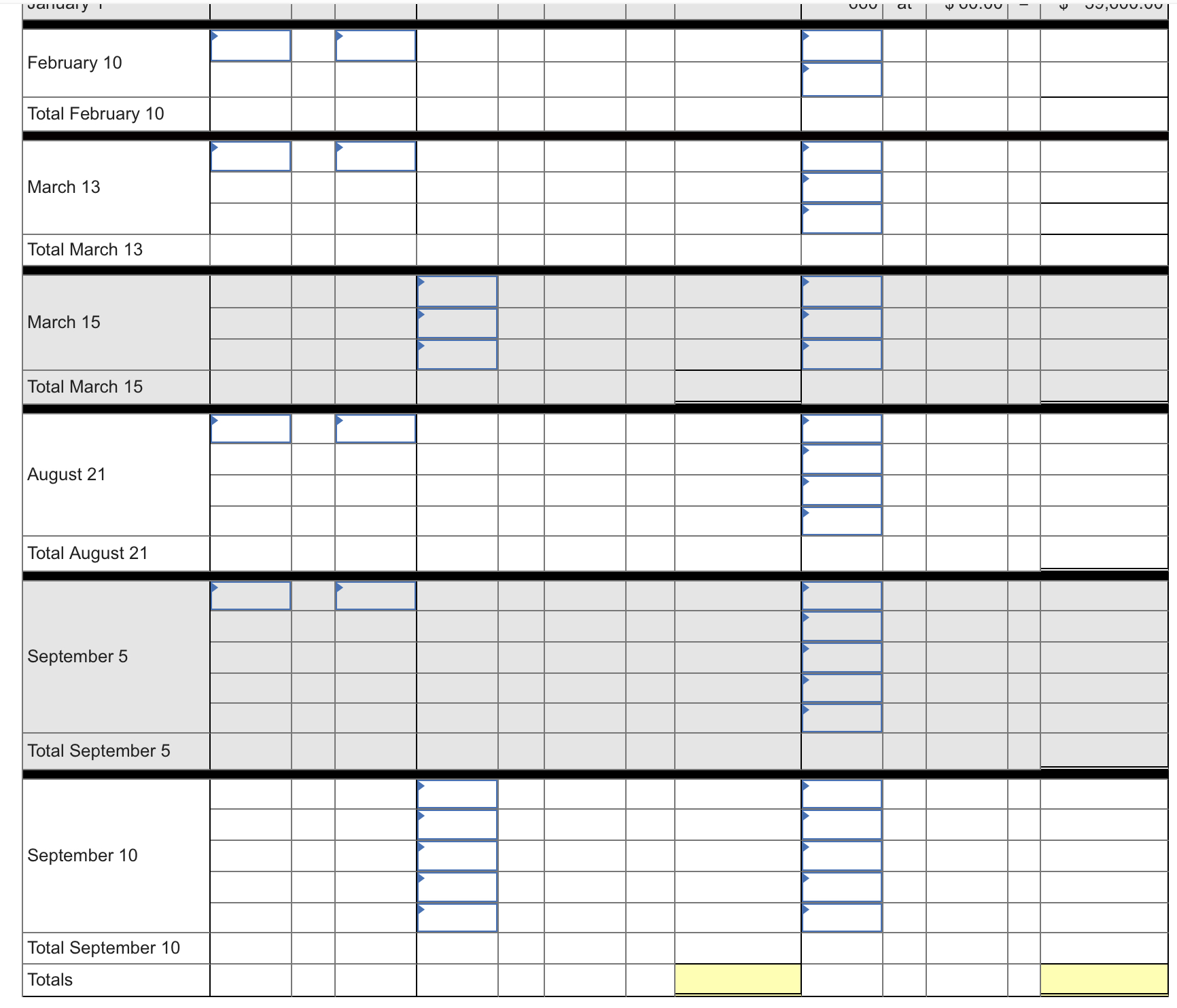
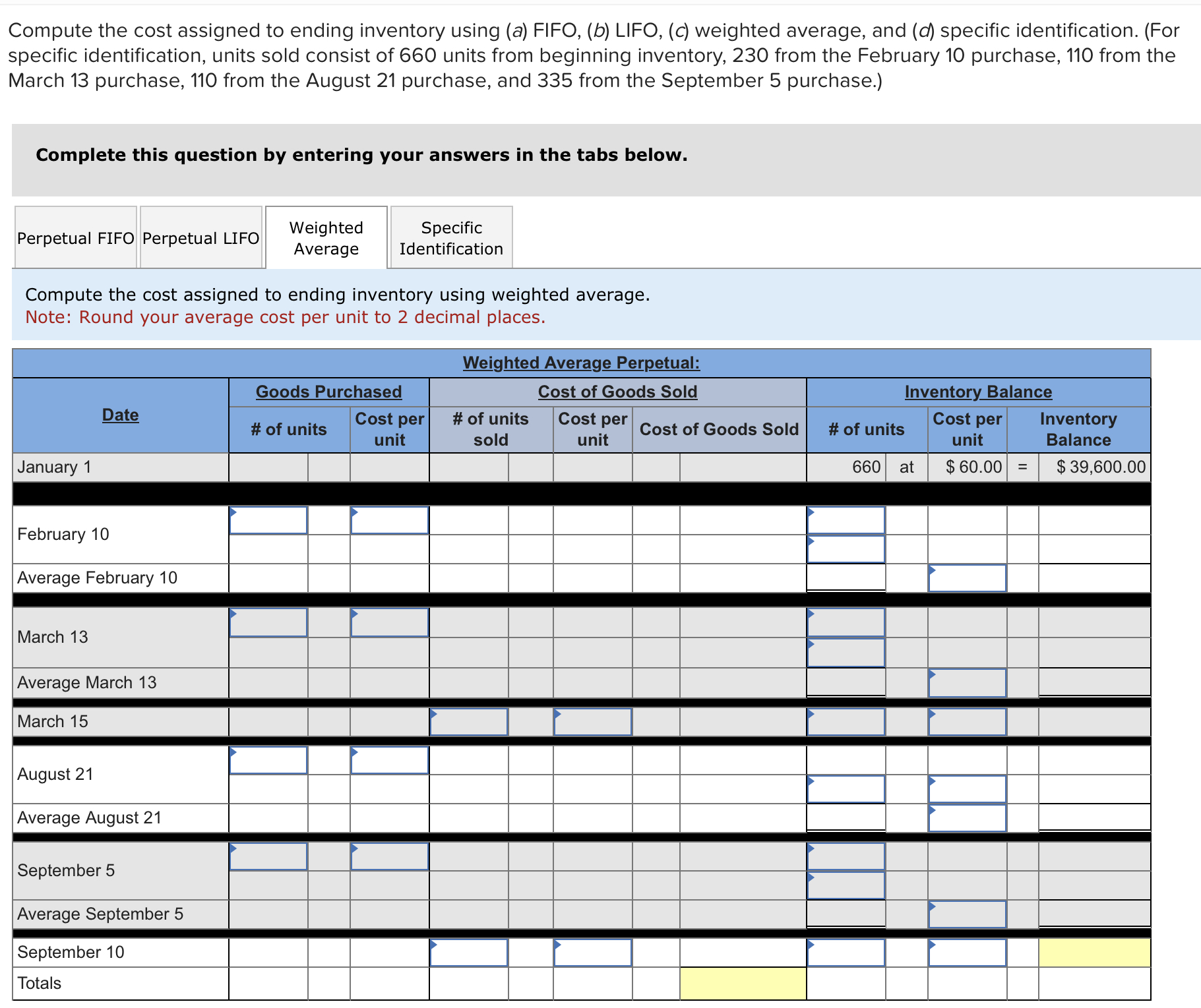
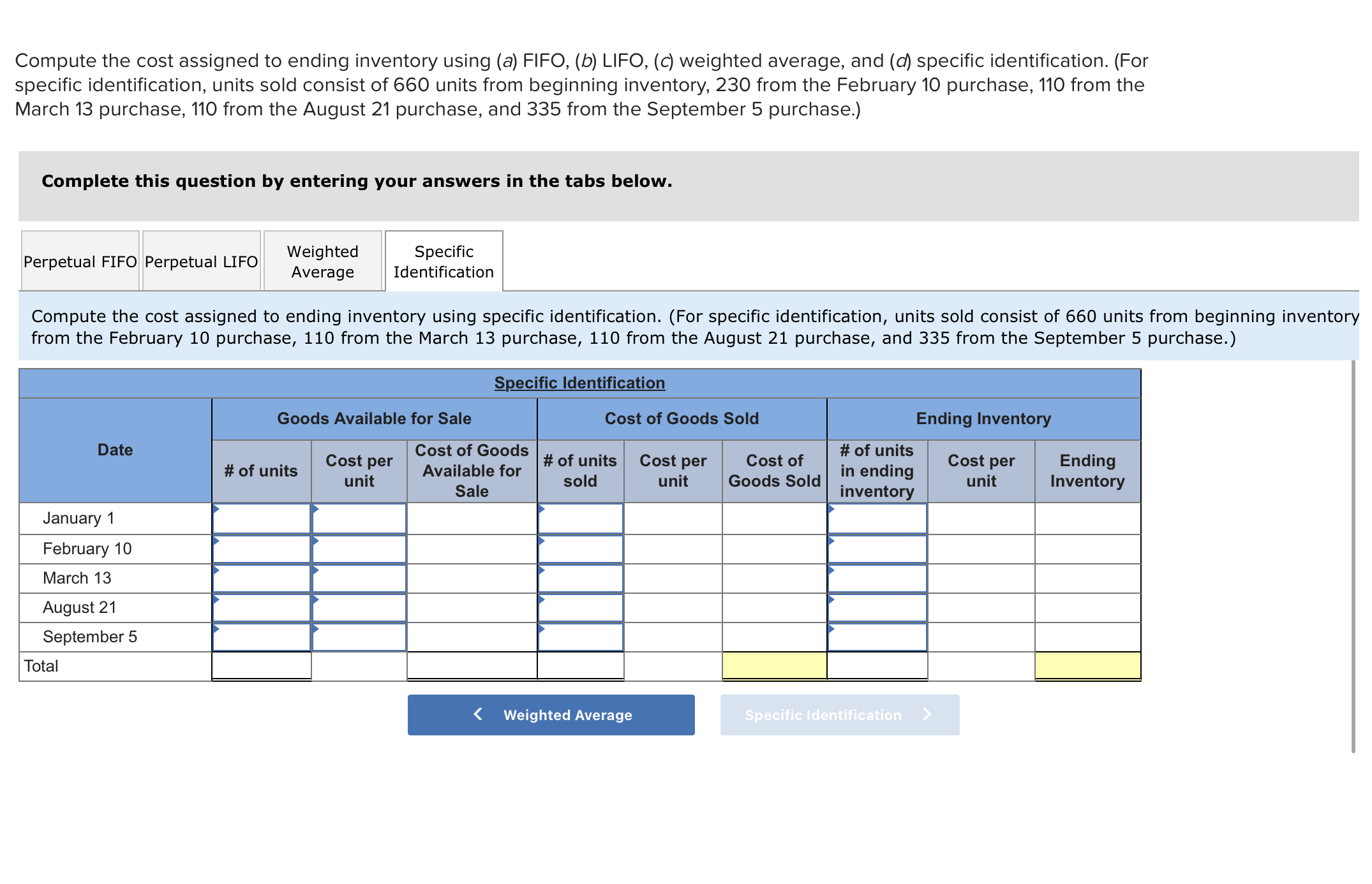
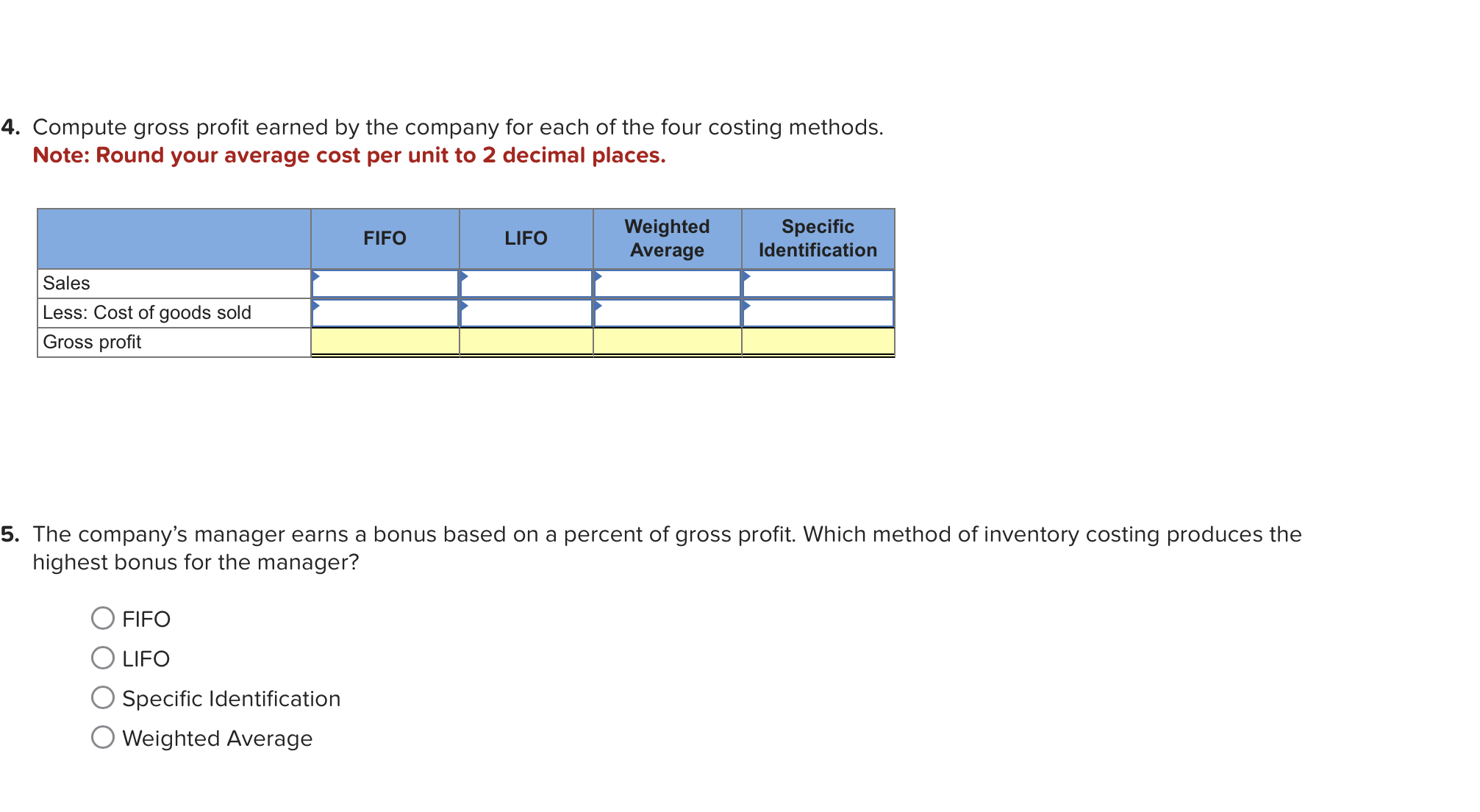 1. Compute cost of goods available for sale and the number of units available for sale. 2. Compute the number of units in ending inventory. 3. Compute the cost assigned to ending inventory using (a) FIFO, (b) LIFO, (c) weighted average, and ( d ) specific identification. (For specific identification, units sold consist of 660 units from beginning inventory, 230 from the February 10 purchase, 110 from the March 13 purchase, 110 from the August 21 purchase, and 335 from the September 5 purchase.) \begin{tabular}{|c|c|c|c|c|c|c|c|c|c|c|} \hline \multicolumn{11}{|c|}{ Perpetual FIFO: } \\ \hline \multirow[b]{3}{*}{ January 1} & \multicolumn{2}{|c|}{ Goods Purchased } & \multicolumn{3}{|c|}{ Cost of Goods Sold } & \multicolumn{5}{|c|}{ Inventory Balance } \\ \hline & # of units & \multirow[t]{2}{*}{\begin{tabular}{c} Cost per \\ unit \end{tabular}} & \begin{tabular}{c} \# of units \\ sold \end{tabular} & \multirow[t]{2}{*}{\begin{tabular}{c} Cost per \\ unit \end{tabular}} & \multirow[t]{2}{*}{ Cost of Goods Sold } & \multicolumn{2}{|c|}{# of units } & \multirow{2}{*}{\begin{tabular}{|c|} \begin{tabular}{c} Cost per \\ unit \end{tabular} \\ $60.00 \\ \end{tabular}} & \multicolumn{2}{|r|}{\begin{tabular}{c} Inventory \\ Balance \end{tabular}} \\ \hline & & & & & & 660 & at & & = & $39,600.00 \\ \hline \multicolumn{11}{|l|}{ February 10} \\ \hline & & & & & & & & & & \\ \hline \multicolumn{11}{|l|}{ Total February 10} \\ \hline & & & & & & & & & & \\ \hline \multicolumn{11}{|l|}{ March 13} \\ \hline \multirow{2}{*}{\multicolumn{11}{|c|}{ Total March 13}} \\ \hline & & & & & & & & & & \\ \hline & & & & & & & & & & \\ \hline \multicolumn{11}{|l|}{ March 15} \\ \hline & & & & & & & & & & \\ \hline \multicolumn{11}{|l|}{ Total March 15} \\ \hline & & & & & & & & & & \\ \hline \multicolumn{11}{|l|}{ August 21} \\ \hline & & & & & & & & & & \\ \hline \multirow{2}{*}{\multicolumn{11}{|c|}{ Total August 21}} \\ \hline & & & & & & & & & & \\ \hline & & & & & & & & & & \\ \hline & & & & & & & & & & \\ \hline \multicolumn{11}{|l|}{ September 5} \\ \hline & & & & & & & & & & \\ \hline \multirow{2}{*}{\multicolumn{11}{|c|}{ Total September 5}} \\ \hline & & & & & & & & & & \\ \hline & & & & & & & & & & \\ \hline & & & & & & & & & & \\ \hline \multicolumn{11}{|l|}{ September 10} \\ \hline & & & & & & & & & & \\ \hline & & & & & & & & & & \\ \hline \multicolumn{11}{|l|}{ Total September 10} \\ \hline Totals & & & & & & & & & & \\ \hline \end{tabular} Compute the cost assigned to ending inventory using (a) FIFO, (b) LIFO, (c) weighted average, and ( d ) specific identification. (For specific identification, units sold consist of 660 units from beginning inventory, 230 from the February 10 purchase, 110 from the March 13 purchase, 110 from the August 21 purchase, and 335 from the September 5 purchase.) Complete this question by entering your answers in the tabs below. Compute the cost assigned to ending inventory using weighted average. Note: Round your average cost per unit to 2 decimal places. Compute the cost assigned to ending inventory using (a) FIFO, (b) LIFO, (c) weighted average, and ( d ) specific identification. (For ipecific identification, units sold consist of 660 units from beginning inventory, 230 from the February 10 purchase, 110 from the March 13 purchase, 110 from the August 21 purchase, and 335 from the September 5 purchase.) Complete this question by entering your answers in the tabs below. Compute the cost assigned to ending inventory using specific identification. (For specific identification, units sold consist of 660 units fro from the February 10 purchase, 110 from the March 13 purchase, 110 from the August 21 purchase, and 335 from the September 5 pur 4. Compute gross profit earned by the company for each of the four costing methods. Note: Round your average cost per unit to 2 decimal places. 5. The company's manager earns a bonus based on a percent of gross profit. Which method of inventory costing produces the highest bonus for the manager? FIFO LIFO Specific Identification Weighted Average
1. Compute cost of goods available for sale and the number of units available for sale. 2. Compute the number of units in ending inventory. 3. Compute the cost assigned to ending inventory using (a) FIFO, (b) LIFO, (c) weighted average, and ( d ) specific identification. (For specific identification, units sold consist of 660 units from beginning inventory, 230 from the February 10 purchase, 110 from the March 13 purchase, 110 from the August 21 purchase, and 335 from the September 5 purchase.) \begin{tabular}{|c|c|c|c|c|c|c|c|c|c|c|} \hline \multicolumn{11}{|c|}{ Perpetual FIFO: } \\ \hline \multirow[b]{3}{*}{ January 1} & \multicolumn{2}{|c|}{ Goods Purchased } & \multicolumn{3}{|c|}{ Cost of Goods Sold } & \multicolumn{5}{|c|}{ Inventory Balance } \\ \hline & # of units & \multirow[t]{2}{*}{\begin{tabular}{c} Cost per \\ unit \end{tabular}} & \begin{tabular}{c} \# of units \\ sold \end{tabular} & \multirow[t]{2}{*}{\begin{tabular}{c} Cost per \\ unit \end{tabular}} & \multirow[t]{2}{*}{ Cost of Goods Sold } & \multicolumn{2}{|c|}{# of units } & \multirow{2}{*}{\begin{tabular}{|c|} \begin{tabular}{c} Cost per \\ unit \end{tabular} \\ $60.00 \\ \end{tabular}} & \multicolumn{2}{|r|}{\begin{tabular}{c} Inventory \\ Balance \end{tabular}} \\ \hline & & & & & & 660 & at & & = & $39,600.00 \\ \hline \multicolumn{11}{|l|}{ February 10} \\ \hline & & & & & & & & & & \\ \hline \multicolumn{11}{|l|}{ Total February 10} \\ \hline & & & & & & & & & & \\ \hline \multicolumn{11}{|l|}{ March 13} \\ \hline \multirow{2}{*}{\multicolumn{11}{|c|}{ Total March 13}} \\ \hline & & & & & & & & & & \\ \hline & & & & & & & & & & \\ \hline \multicolumn{11}{|l|}{ March 15} \\ \hline & & & & & & & & & & \\ \hline \multicolumn{11}{|l|}{ Total March 15} \\ \hline & & & & & & & & & & \\ \hline \multicolumn{11}{|l|}{ August 21} \\ \hline & & & & & & & & & & \\ \hline \multirow{2}{*}{\multicolumn{11}{|c|}{ Total August 21}} \\ \hline & & & & & & & & & & \\ \hline & & & & & & & & & & \\ \hline & & & & & & & & & & \\ \hline \multicolumn{11}{|l|}{ September 5} \\ \hline & & & & & & & & & & \\ \hline \multirow{2}{*}{\multicolumn{11}{|c|}{ Total September 5}} \\ \hline & & & & & & & & & & \\ \hline & & & & & & & & & & \\ \hline & & & & & & & & & & \\ \hline \multicolumn{11}{|l|}{ September 10} \\ \hline & & & & & & & & & & \\ \hline & & & & & & & & & & \\ \hline \multicolumn{11}{|l|}{ Total September 10} \\ \hline Totals & & & & & & & & & & \\ \hline \end{tabular} Compute the cost assigned to ending inventory using (a) FIFO, (b) LIFO, (c) weighted average, and ( d ) specific identification. (For specific identification, units sold consist of 660 units from beginning inventory, 230 from the February 10 purchase, 110 from the March 13 purchase, 110 from the August 21 purchase, and 335 from the September 5 purchase.) Complete this question by entering your answers in the tabs below. Compute the cost assigned to ending inventory using weighted average. Note: Round your average cost per unit to 2 decimal places. Compute the cost assigned to ending inventory using (a) FIFO, (b) LIFO, (c) weighted average, and ( d ) specific identification. (For ipecific identification, units sold consist of 660 units from beginning inventory, 230 from the February 10 purchase, 110 from the March 13 purchase, 110 from the August 21 purchase, and 335 from the September 5 purchase.) Complete this question by entering your answers in the tabs below. Compute the cost assigned to ending inventory using specific identification. (For specific identification, units sold consist of 660 units fro from the February 10 purchase, 110 from the March 13 purchase, 110 from the August 21 purchase, and 335 from the September 5 pur 4. Compute gross profit earned by the company for each of the four costing methods. Note: Round your average cost per unit to 2 decimal places. 5. The company's manager earns a bonus based on a percent of gross profit. Which method of inventory costing produces the highest bonus for the manager? FIFO LIFO Specific Identification Weighted Average Step by Step Solution
There are 3 Steps involved in it
Step: 1

Get Instant Access to Expert-Tailored Solutions
See step-by-step solutions with expert insights and AI powered tools for academic success
Step: 2

Step: 3

Ace Your Homework with AI
Get the answers you need in no time with our AI-driven, step-by-step assistance
Get Started


